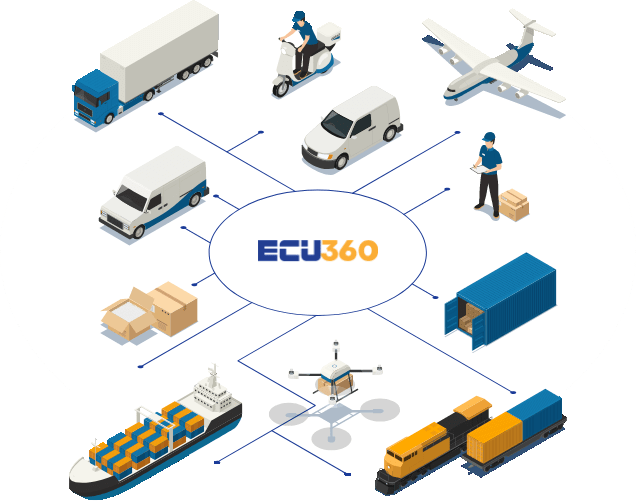From Ocean to Onshore: Overcoming Challenges in Port Operations
Introduction
As the world economy integrates and becomes more interconnected, ports stand out as the lifeblood links connecting oceans and land, enabling the efficient movement of goods across the globe. However, numerous global shipping challenges emerge that impact port operations and create disruptions within the supply chain, raising costs. This blog discusses the significant shipping port challenges faced by port logistics operators, innovative port congestion solutions,and ECU Worldwide’s ECU360 platform for overcoming these hurdles in the most effective way possible.
Global Shipping Bottlenecks
Port congestion and delays: Congestion at ports often leads to longer times from a vessel’s arrival to cargo handling and its eventual departure. Factors such as increased trade volumes, insufficient infrastructure, and operational inefficiencies contribute to this. At major maritime shipping hubs, where container shipping delays are frequent, imbalances in supply and demand, as well as infrastructure constraints, have exacerbated delays globally.
Supply chain bottlenecks: Port congestion, natural disasters, and geopolitical events create global shipping challenges that cascade down the supply chain, affecting businesses and consumers alike. Ensuring the smooth flow of goods through ports is essential to keeping essential commodity streams running.
Port Logistics Challenges
Cargo handling issues: Effective cargo handling is crucial for saving time and money. Poor equipment, labor shortages, and disorganized processes severely impact the seamless movement of goods at ports.
Onshore logistics: The movement of cargo from ports to inland destinations, often referred to as onshore logistics, is equally vital. Delays in trucking, rail transport, or warehousing can have a domino effect, causing further disruptions along the supply chain.
Port efficiency: Optimizing port operations is key to improving efficiency and cutting costs. Process simplification, technology adoption, and enhanced collaboration between stakeholders are critical for increasing port efficiency.
Overcoming Port Challenges
Port automation: The implementation of port automation technologies, such as automated cargo handling, gate operations, and yard management, significantly improves efficiency. Automation reduces labor costs, minimizes errors, and increases throughput.
Port capacity management: Expanding port capacity is essential to handle rising trade volumes. This involves the expansion of berths, terminal sizes, and storage areas to accommodate larger vessels and increasing cargo volumes.
Port security challenges: Ensuring port security is crucial for national and trade interests. Implementing effective safety measures such as surveillance systems, access controls, and risk assessments helps prevent unauthorized access and security breaches.
Ocean-to-onshore logistics: Integrating ocean freight with onshore logistics is key to optimizing the entire supply chain. Coordinating efforts between port operators, shipping lines, and inland transport providers ensures the smooth movement of cargo across both maritime and inland networks.
ECU Worldwide’s Solution: ECU360
For port operators and shippers facing these ocean freight challenges, ECU Worldwide offers an end-to-end solution with ECU360. By enabling real-time visibility, data-driven insights, and advanced analytics, ECU360 helps businesses tackle shipping port challenges head-on.
- Improved port efficiency: With better visibility into port operations, improved planning and resource allocation take place, optimizing processes and improving overall port performance.
- Reduction in delays: In real-time, any container shipping delays can be tracked and addressed proactively. ECU360 identifies potential supply chain bottlenecks and helps resolve issues before they escalate.
- Building resilient supply chains: ECU360 provides data-driven insights that allow businesses to identify risks and develop contingency plans, ultimately creating more resilient supply chains.
- Improved customer experience: ECU360 supplies accurate and timely information that enhances the customer experience, while also strengthening relationships with key stakeholders.
Conclusion
The challenges in port operations are diverse and multifaceted. However, with innovative solutions such as port automation, port capacity management, and technologies like ECU360, businesses can effectively navigate these global trade logistics complexities. By integrating advanced tools and strategies, ECU Worldwide positions itself as a trusted partner in helping companies overcome port logistics challenges and ensuring the smooth flow of goods through global shipping networks.
Like





Comments